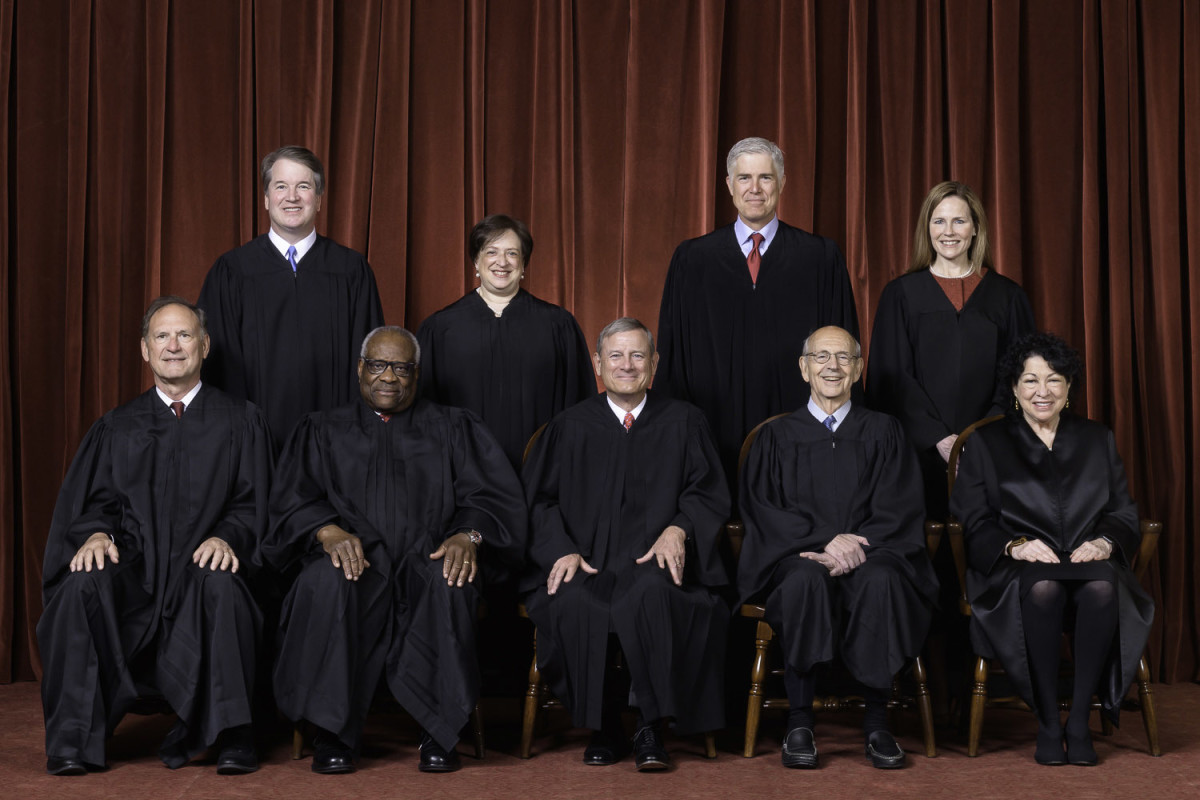How Does a Bill Become Law?
Introduction
Sometimes we wonder if our elected officials can do anything right. However, there are times when they do the right thing, and I don’t mean “right” in that they were “successful” in getting their legislation through or “right” because they just made a lot of people happy with the bill they passed. Rather, I mean “right” because it's morally right. The bill they passed constituted “goodness.” Such was the case when Congress passed, and the president signed, the Partial Birth Abortion Ban Act of 2003.

Why a Law Against Partial Birth Abortion?
According to the American Medical Association, “partial birth abortion” or what the medical community calls “dilation and extraction” (or Intact D&X) is defined as
Deliberate dilatation of the cervix, usually over a sequence of days; instrumental or manual conversion of the fetus to a footling breech; breech extraction of the body excepting the head; and partial evacuation of the intracranial contents of the fetus to effect vaginal delivery of a dead but otherwise intact fetus.[1]
The other day, I watched a YouTube video of a woman being attacked by a shark. This woman remarkably survived, yet lost a limb as a result. I thought of what it would be like to have one of my limbs torn from my body as I struggled to get away from the thing that was tearing my arm from its socket or crushing and then severing my leg.
It’s time for an empathy check: do you have any sympathy for someone to undergo such an ordeal? This is exactly what happens to an infant that undergoes dilation and extraction. To say that such an act is brutal is an understatement. Even by Nazi standards it’s horrible. As a nation, we have much to answer for to do this to the most defenseless among us. And yet, there were Americans that went to bat for this practice.
Fortunately a large group of our members of Congress had enough presence of mind to be horrified by this practice and moved to ban it.
While the law banning partial birth abortion passed in 2003, it had its first introduction into the Congress eight years earlier. In 1995 Florida representative Charles T. Canady introduced a bill to ban partial birth abortion. Canady also coined the term “partial birth abortion.” Canady’s bill passed both houses of Congress, but the bill was vetoed by President Clinton. Again, Congress passed a similar law in 1997 with this one also being vetoed by Clinton.
In the Meantime...
In the meantime, several states were passing laws banning partial birth abortion. By the time we arrive at 2000, several states had laws either restricting or banning partial birth abortion. The Supreme Court agreed to hear a challenge to state regulation of partial birth abortion in the state of Nebraska with the court case Stenberg v. Carhart (2000). In this case, the Court struck down the Nebraska law saying that the state law created an undue burden on women, a Court standard that essentially replaced the “trimester” approach several years previous. The Nebraska law also lacked a provision protecting the health of the mother.
Also in 2000, Texas Governor George W. Bush was running for president. Bush pledged that if the Congress would deliver to his desk a bill banning partial birth abortion, he would sign it. Bush did win that election and the 108th Congress went to work on passing another bill banning partial birth abortion. Things did not look good for the success of the bill however, given that the Supreme Court had just struck down a similar ban at the state level.
The Bill is Introduced and Goes to Committee
This time a bill banning partial birth abortion was advanced by Steve Chabot (R-OH) in the House of Representatives (HR 760) February 13, 2003 and by Rick Santorum (R-PA) in the Senate (S 3) one day later. In the House the bill was referred to the House Committee on the Judiciary. It may seem odd that such a bill would go to this committee, but remember that the chances that the Court would strike the law down were thought to be high. HR 760 was reported out of committee and onto the floor. The entire House passed HR 760 by a comfortable margin on April 3. As for the Senate, they had actually passed a similar version of the House bill back in March.
The Bill Goes to Conference
The House and Senate bills needed to be reconciled and so a conference committee was convened to reconcile the two bills. Five senators and two House members comprised the conference. A main sticking point was an amendment added to the Senate version of the bill by Tom Harkin (D-IA). The “Harkin Amendment” stated a support for Roe v. Wade. In the end, the Harkin Amendment was dropped and the conference reported out the bill on September 30. Both House and Senate voted on the conference bill. Support for the bill carried in the House 281-142 and 64-34 in the Senate.

The President Signs the Bill
In keeping with his campaign promise, George W. Bush signed the bill banning partial birth abortion at a signing ceremony at the Ronald Reagan Building on November 5. This had a symbolic gesture In that Ronald Reagan was the first American president that was unashamedly pro-life. In that speech, Bush recognized several of the people there who had been instrumental in the passage of the bill like Steve Chabot and Rick Santorum. President Bush also recognized Bart Stupak who has made a name for himself in 2009 in that it was his “Stupak Amendment” that was added to House health care bill in 2009. This amendment applies current abortion law (like that in the Hyde Amendment ) to the House health care bill.
At that signing ceremony President Bush said that
America stands for liberty, for the pursuit of happiness and for the unalienable right of life. And the most basic duty of government is to defend the life of the innocent. Every person, however frail or vulnerable, has a place and a purpose in this world. Every person has a special dignity. This right to life cannot be granted or denied by government, because it does not come from government, it comes from the Creator of life.
Just before he signed the bill President Bush said in his speech that the Partial Birth Abortion Act of 2003 was “ the generous and merciful spirit of our country at its best.” He was right; the Congress placed our nation on a path of eventually stopping, not only partial birth abortion, but any premeditated act that threatens the lives of our children.

Enter the Courts...
When a bill is passed by the Congress and is signed by the president, that bill becomes law. However, in the United States, that law may not go into effect. For example, Congress might have authorized the legislation, but refused to appropriate money to the law. Another common defeater for a law is if that law is struck down in the courts as being unconstitutional.
It is the constitutionality of the ban on partial birth abortion that was at question after it became law. Earlier, I mentioned the case Stenberg v. Carhart where the Supreme Court ruled that the ban on partial birth abortion placed an “undue burden” on women. The “undue burden” standard has been used in abortion cases since Planned Parenthood v. Casey (1992).
Right after Bush signed the law banning partial birth abortion, three federal district courts, one in California, one in Nebraska, and one in New York, declared the law to be unconstitutional, stipulating that the law contained no provision for the health of the mother, a standard established in the case Doe v. Bolton which was decided the same day as Roe v. Wade in 1973.
Of the three federal district courts that took a jab at the law, one of them involved the state of Nebraska and the same abortion doctor that won the Stenberg case, Dr. Leroy Carhart. The Eighth Circuit Court of Appeals upheld the ruling of the district court which said that the congressional ban on partial birth abortion was unconstitutional. The Justice Department under the direction of Attorney General Alberto Gonzales appealed to the Supreme Court, asking that the Supreme Court to review the case which they agreed to.
In Gonzales v. Carhart (2007) the Supreme Court reversed the Eighth Circuit’s decision and upheld the Partial Birth Abortion Ban Act of 2003. The Court ruled that the ban did not impose an undue burden on women in obtaining an abortion. The Court said that the state had an interest in protecting “fetal life” and that the congressional law did not violate the Constitution.
Reference
[1] “Health and Ethics Policies of the AMA House of Delegates.” American Medical Association. H-5.982 http://www.ama-assn.org/ad-com/polfind/Hlth-Ethics.pdf (accessed 22 November 22 2009).
Should Congress Get Involved in Banning Practices Like Abortion?
© 2009 William R Bowen Jr








